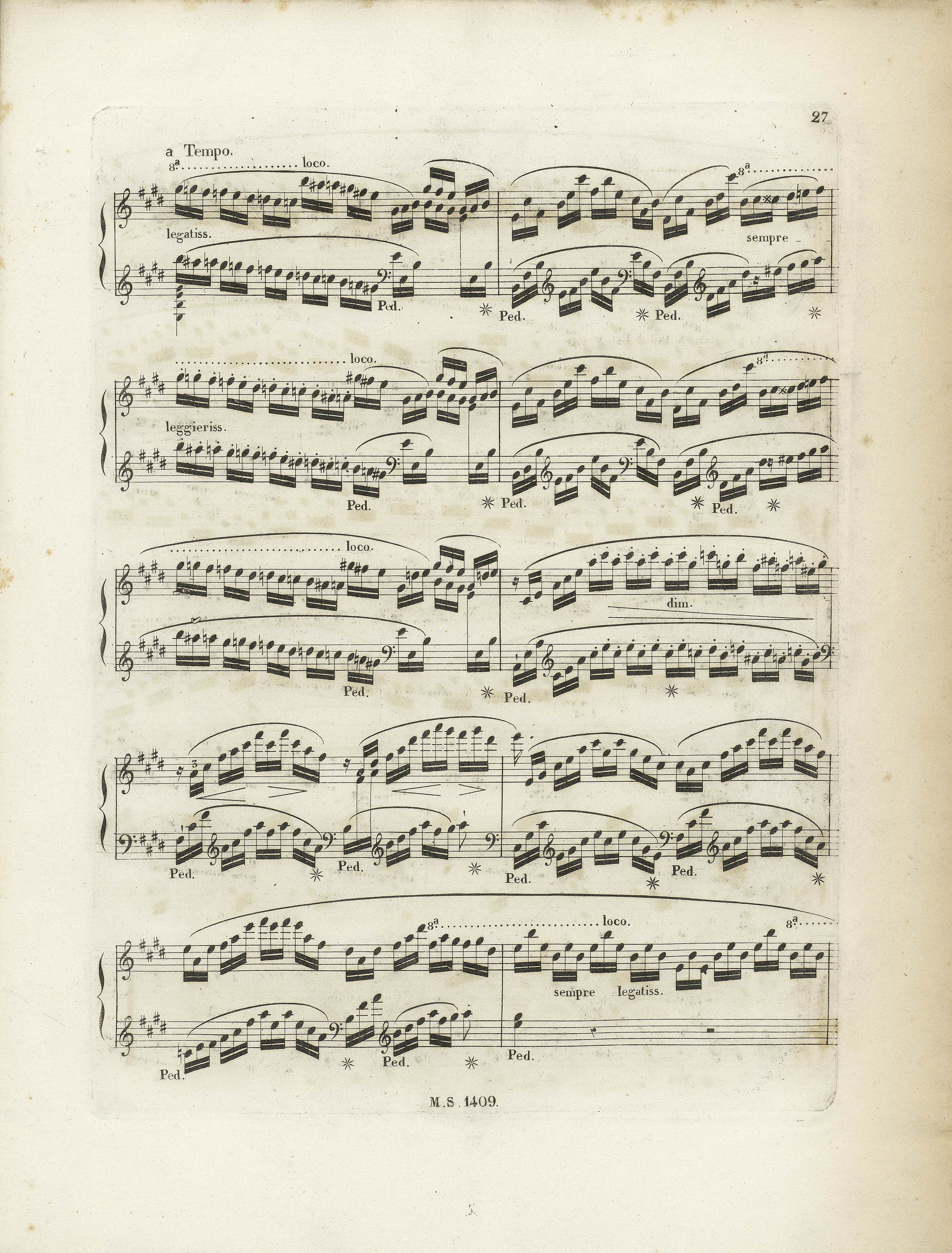



The traces of proofreading of slurs in bars 106-113 visible in FE prove that Chopin paid a lot of attention to the articulation markings in this movement (see also the note on staccato in bar 110). It can also demonstrate that the notation of [A] was inaccurate in this respect (or that the engraver was careless – cf. the characterization of GE1 in the Concerto in F minor, op. 21). In the photographs of various copies of FE, presented in mUltimate Chopin, traces of removed slurs may be seen in the 2nd half of bar 106 (two slurs in the L.H.), the 1st half of bar 108 (two slurs in the L.H.), on the 4th beat of bar 108 (both hands), on the 3rd beat of bar 109 (L.H.), in the 1st half of bar 110 (R.H.), on the 4th beat of bars 111 and 113 (L.H.), in the 1st half of bar 112 (two slurs in the R.H.) and in the 2nd half of bar 112 (L.H.). One can assume that some slurs were added at the time of proofreading also in these places where no traces of changes are visible. However, the end effect gives rise to doubts in certain places – one can suspect that in two cases, Chopin's intention was inaccurately reproduced while implementing the proofreading:
- The continuous slur in the L.H., running from the beginning of the 2nd half of that bar to the end of the line (and further to the 3rd beat of the next bar), was most probably added by Chopin in a proofreading of FE. It is proved by the traces of removing the slur encompassing the last 4 semiquavers in bar 108. In that bar, one can also see traces of combining and prolonging the slurs in the L.H. in the 1st half of the bar and of prolonging the slur in the R.H., which originally started only on the 4th beat of the bar. According to us, in this situation one can suspect an inaccuracy in the implementation of the slurring's proofreading – the engraver could have relied on the aforementioned two half-bar slurs and ignore the break in the discussed slur. This appears even more likely when considering the slur, written with Chopinesque panache, that could have appeared to have been added to the slur printed at the end of the bar, particularly since the latter was prolonged also on the other side, towards the next bar. Due to this reason, it seems quite likely that the composer meant two slurs here, like in analogous bar 106, separated with a rest. This does not exclude authenticity of the source slur – perhaps Chopin wanted to suggest in bars 108-109 a more long-breathing thinking in the parts of both hands.
-
The slur in the 2nd half of bar 113, present in FE (→EE,GE1→GE2), although added in a proofreading instead of a slur encompassing the last semiquaver triplet only, is almost certainly erroneous. Like in analogous bar 111, Chopin wanted to prolong the slur; however, due to the notation of the first triplet of this passage in the bass clef, constituting an unnecessary complication, the new slur was written a triplet too late. The mistake could have been committed by the composer himself, who could have been misled by the misplaced
 mark.
mark.
Compare the passage in the sources »
category imprint: Editorial revisions; Corrections & alterations; Source & stylistic information
issues: Inaccuracies in FE, Authentic corrections of FE
notation: Slurs



